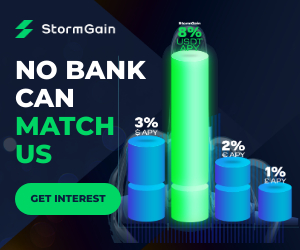

Optimizing Website Speed? In the fast-paced digital landscape, where attention spans are shrinking and competition is fierce, website speed has emerged as a critical factor that can make or break online success. A slow-loading website can drive visitors away, resulting in lost opportunities and decreased search engine rankings. On the other hand, a fast and optimized website can enhance user experience, boost engagement, and positively impact SEO.
Optimizing Website Speed
In this blog, we will delve into the impact of website speed and performance on user experience and search rankings, and provide actionable tips for optimizing site loading times to ensure optimal digital optimization.
The Need for Speed: Understanding the Impact on User Experience
In a world where instant gratification is the norm, website visitors expect seamless and lightning-fast experiences. Studies have shown that a delay of just a few seconds in page load time can significantly increase bounce rates, leading to missed conversions and reduced revenue. Slow-loading websites frustrate users, impairing their overall experience and diminishing their trust in the brand.
So Digital optimization relies heavily on providing an exceptional user experience, and website speed plays a pivotal role in achieving this goal. A fast-loading website can engage users, reduce bounce rates, and encourage longer dwell times, ultimately contributing to increased conversions and customer satisfaction.
The Search Engine Connection: How Website Speed Impacts SEO
In the ever-evolving world of search engine algorithms, website speed has become an important ranking factor. Search engines, such as Google, recognize the significance of delivering high-quality search results to users promptly.
As a result, faster-loading websites are often rewarded with higher rankings in search engine results pages (SERPs). So search engines continuously strive to improve user experience, and slow-loading websites can hinder their efforts.
Consequently,
websites that prioritize speed and performance are more likely to be favored by search engine crawlers, leading to improved visibility and organic traffic.

Measuring Website Speed: Understanding Key Metrics
So optimize website speed, it is essential to understand the key metrics used to evaluate performance. These metrics include:
- Page Load Time: The time it takes for a web page to fully load and display its content to the user.
- Time to First Byte (TTFB): The time taken by the server to respond to a user's request.
- First Contentful Paint (FCP): The time it takes for the first piece of content to appear on the screen.
- Largest Contentful Paint (LCP): The time it takes for the largest element on the page to become visible.
But monitoring these metrics, website owners can identify areas for improvement and implement targeted optimizations to enhance overall website performance.
Actionable Tips for Optimizing Website Loading Times
a. Optimize Image and Media Files: Compress images and videos without compromising quality to reduce file sizes and improve loading times.
b. Enable Browser Caching:
So utilize browser caching to store certain elements of the website on the user's device, reducing the need for repeated downloads and speeding up subsequent visits.
c. Minimize HTTP Requests:
Reduce the number of elements on a web page, such as scripts and stylesheets, to minimize the number of HTTP requests required for loading.
d. Utilize Content Delivery Networks (CDNs):
So leverage CDNs to distribute website content across multiple servers globally, reducing latency and improving loading times for users in various locations.
e. Implement Lazy Loading:
Load only the visible content initially and defer the loading of below-the-fold content until the user scrolls down, improving initial loading times.
f. Optimize Website Code:
So remove unnecessary code, reduce server response times, and leverage asynchronous loading techniques for enhanced website speed.
g. Prioritize Mobile Optimization:
Given the increasing mobile usage, prioritize optimizing websites for mobile devices to ensure fast and responsive experiences.
Continuous Monitoring and Testing
Optimizing website speed is not a one-time task. Continuous monitoring and testing are essential to ensure that website performance remains at its peak.So regularly conduct speed tests using tools like Google PageSpeed Insights or GTmetrix to identify areas that need improvement.
Conclusion In the digital era, website speed is no longer just a nice-to-have feature;
it is a critical element that significantly impacts user experience and search engine rankings. A fast and optimized website can enhance user engagement, boost conversions, and ultimately contribute to digital optimization success.
But understanding the importance of website speed, measuring key performance metrics, and implementing actionable tips for optimization, website owners can create an exceptional digital experience that captivates users and impresses search engines alike.
Remember, in the world of digital optimization, speed truly matters, and it can be the key to unlocking unprecedented levels of online success.

https://sakkemoto.com/optimizing-website-speed/
